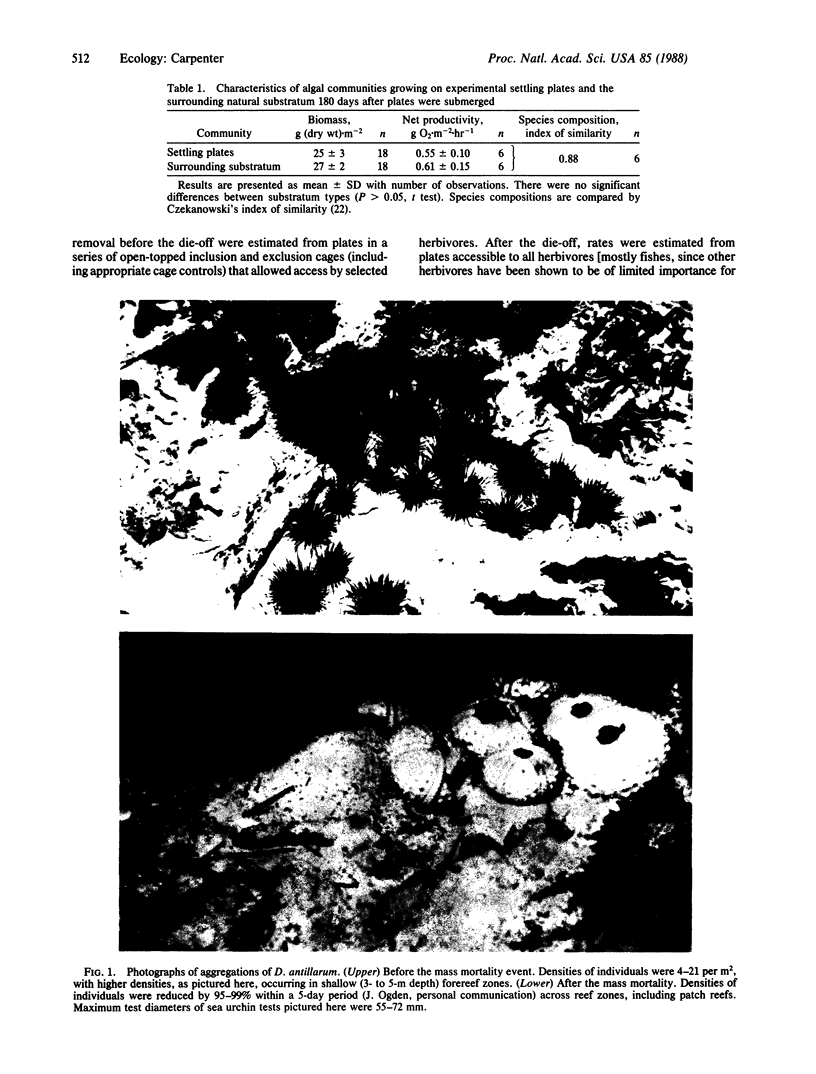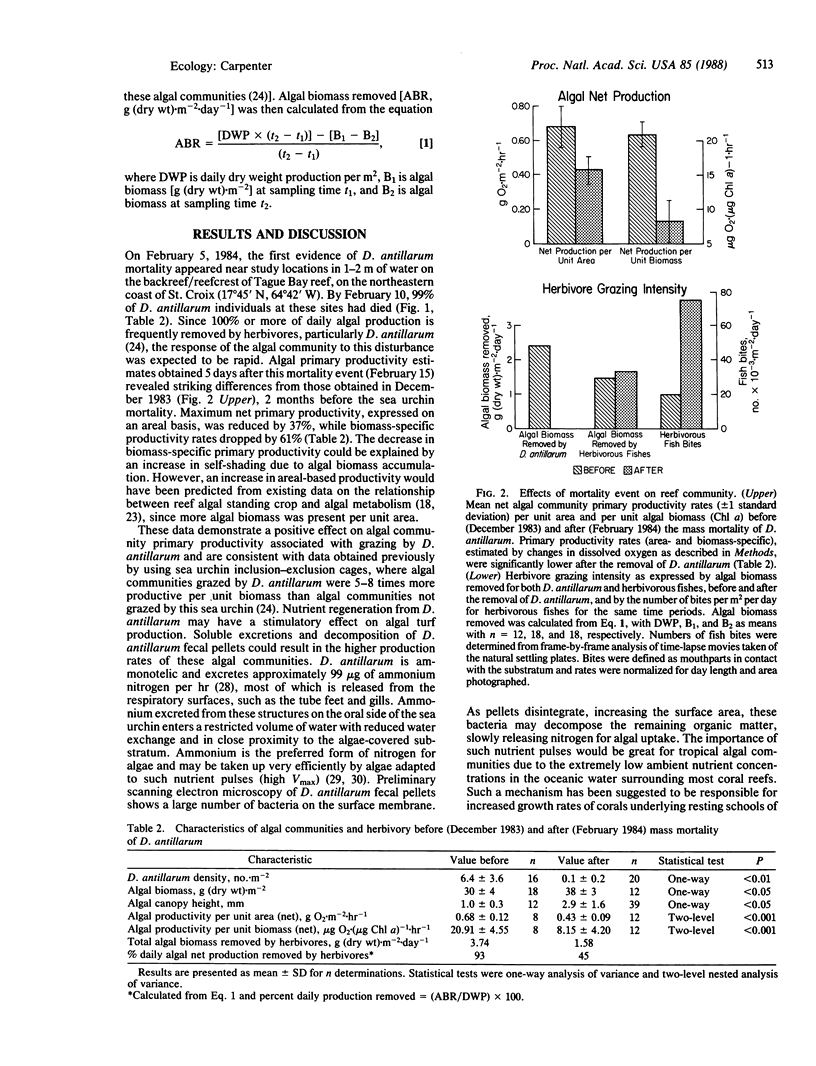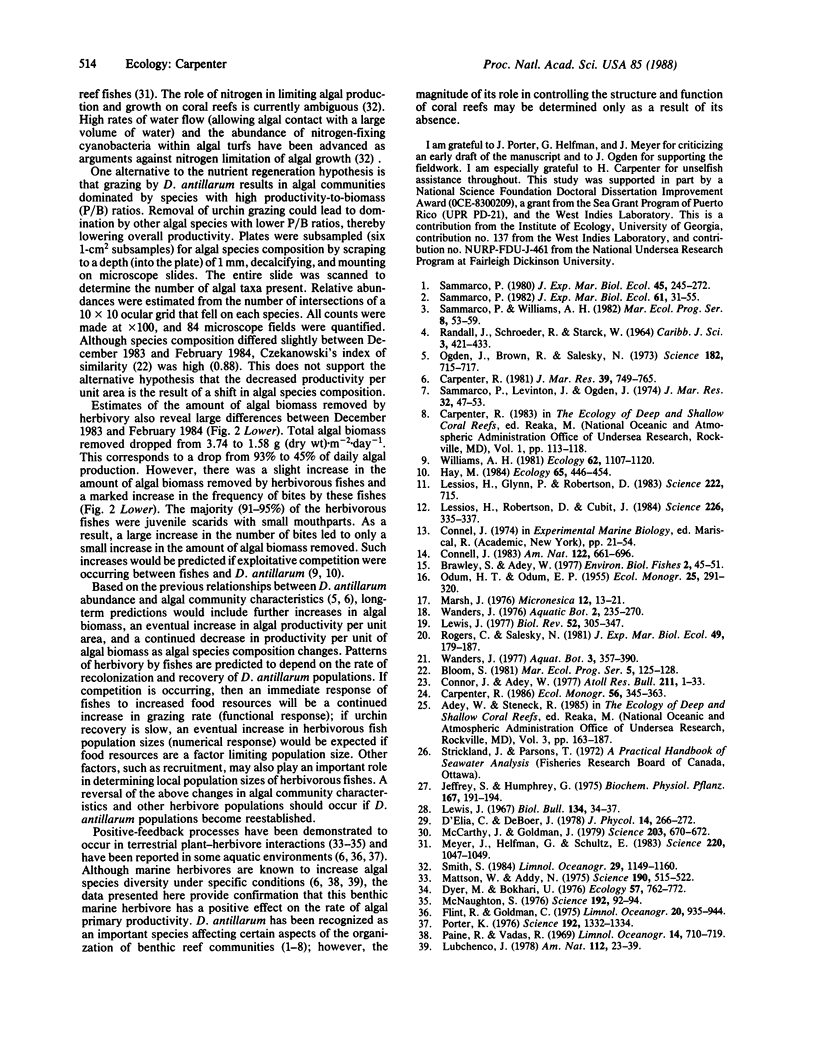Abstract
The echinoid Diadema antillarum Philippi was an important herbivore in many areas of the Caribbean prior to the mass mortality that eliminated 95-99% of the individuals throughout the Caribbean in 1983-84. Five days after the mass mortality in St. Croix, U.S. Virgin Islands, algal biomass increased by 20% and algal community primary productivity dropped on both a per unit area basis (37% decrease) and per unit algal biomass basis (61% decrease). This accompanied a 50% decrease in the amount of algal biomass removed by herbivores. Concurrent with the changes in the algal community were increases in the rates of grazing by herbivorous fishes, suggesting that exploitative competition for food was occurring between D. antillarum and some herbivorous fish species. These results suggest that D. antillarum has an important role in structuring both the producer and consumer components of Caribbean coral reef ecosystems.
Keywords: Diadema antillarum, algae, coral reef ecosystem, primary productivity
Full text
PDF



Images in this article
Selected References
These references are in PubMed. This may not be the complete list of references from this article.
- Allan L., Barrow A., Haskins N. J., Rogers M., Rose D. A., Palmer R. F. Disposition of pranolium chloride in dogs, baboons and monkeys. Eur J Drug Metab Pharmacokinet. 1981;6(3):179–187. doi: 10.1007/BF03189487. [DOI] [PubMed] [Google Scholar]
- Lessios H. A., Glynn P. W., Robertson D. R. Mass mortalities of coral reff organisms. Science. 1983 Nov 18;222(4625):715–715. doi: 10.1126/science.222.4625.715. [DOI] [PubMed] [Google Scholar]
- Lessios H. A., Robertson D. R., Cubit J. D. Spread of diadema mass mortality through the Caribbean. Science. 1984 Oct 19;226(4672):335–337. doi: 10.1126/science.226.4672.335. [DOI] [PubMed] [Google Scholar]
- Lewis J. B. Nitrogenous excretion in the tropical sea urchin Diadema antillarum Philippi. Biol Bull. 1967 Feb;132(1):34–37. doi: 10.2307/1539875. [DOI] [PubMed] [Google Scholar]
- McCarthy J. J., Goldman J. C. Nitrogenous nutrition of marine phytoplankton in nutrient-depleted waters. Science. 1979 Feb 16;203(4381):670–672. doi: 10.1126/science.203.4381.670. [DOI] [PubMed] [Google Scholar]
- McNaughton S. J. Serengeti migratory wildebeest: facilitation of energy flow by grazing. Science. 1976 Jan 9;191(4222):92–94. doi: 10.1126/science.191.4222.92. [DOI] [PubMed] [Google Scholar]
- Meyer J. L., Schultz E. T., Helfman G. S. Fish schools: an asset to corals. Science. 1983 Jun 3;220(4601):1047–1049. doi: 10.1126/science.220.4601.1047. [DOI] [PubMed] [Google Scholar]
- Ogden J. C., Brown R. A., Salesky N. Grazing by the Echinoid Diadema antillarum Philippi: Formation of Halos around West Indian Patch Reefs. Science. 1973 Nov 16;182(4113):715–717. doi: 10.1126/science.182.4113.715. [DOI] [PubMed] [Google Scholar]
- Porter K. G. Enhancement of algal growth and productivity by grazing zooplankton. Science. 1976 Jun 25;192(4246):1332–1334. doi: 10.1126/science.192.4246.1332. [DOI] [PubMed] [Google Scholar]




